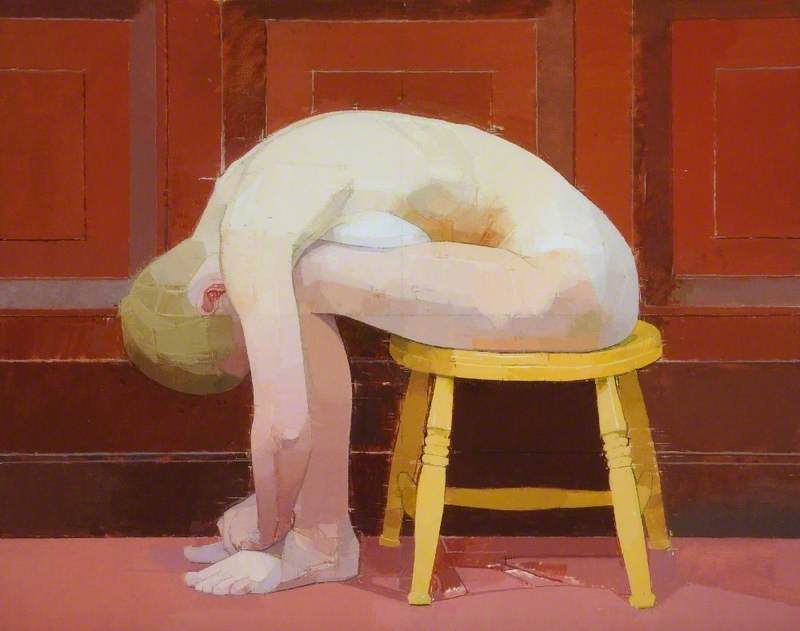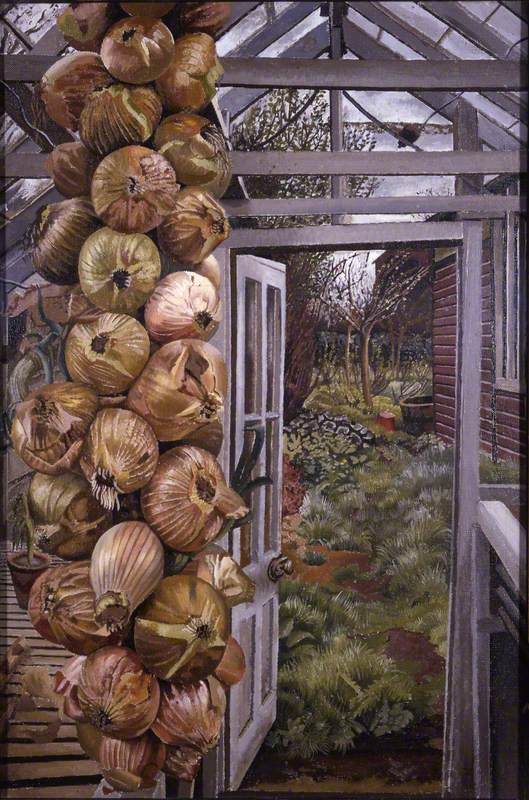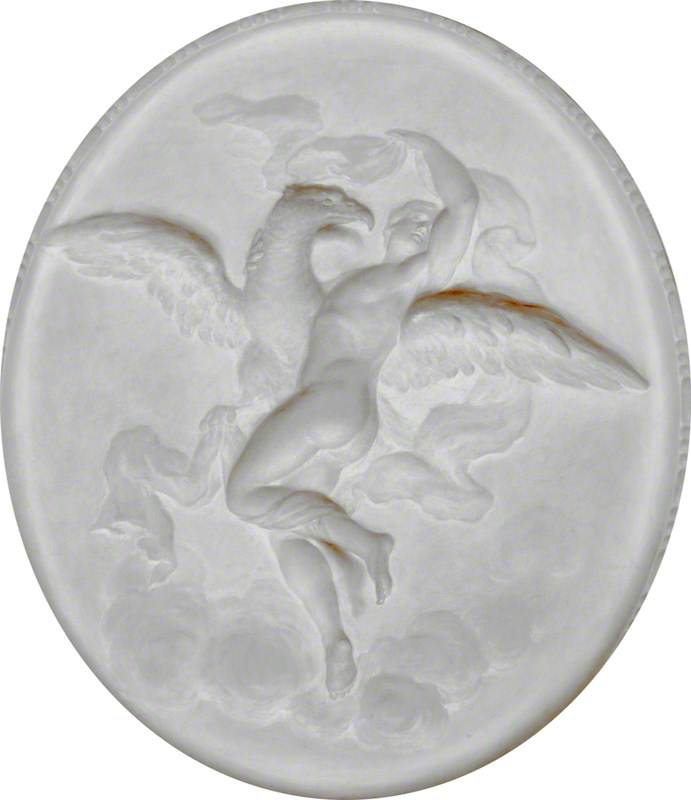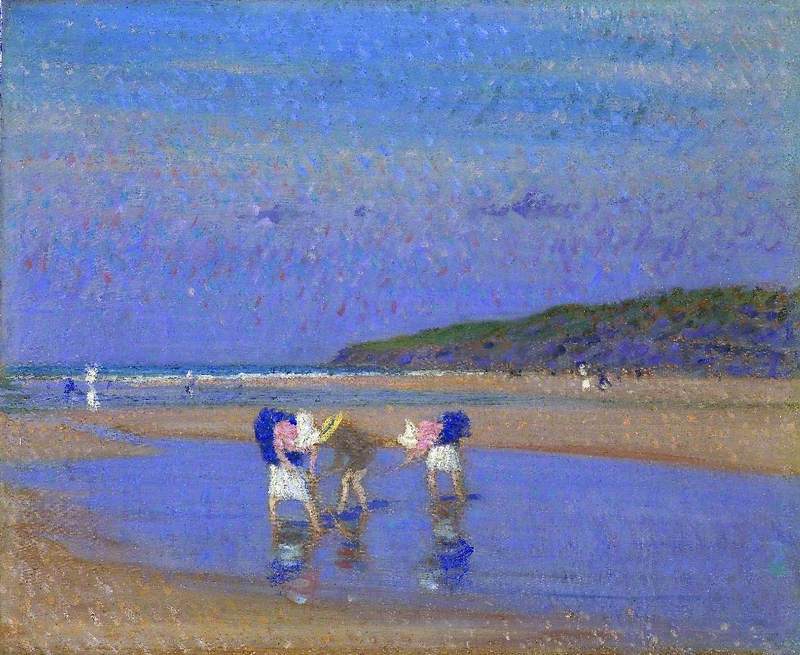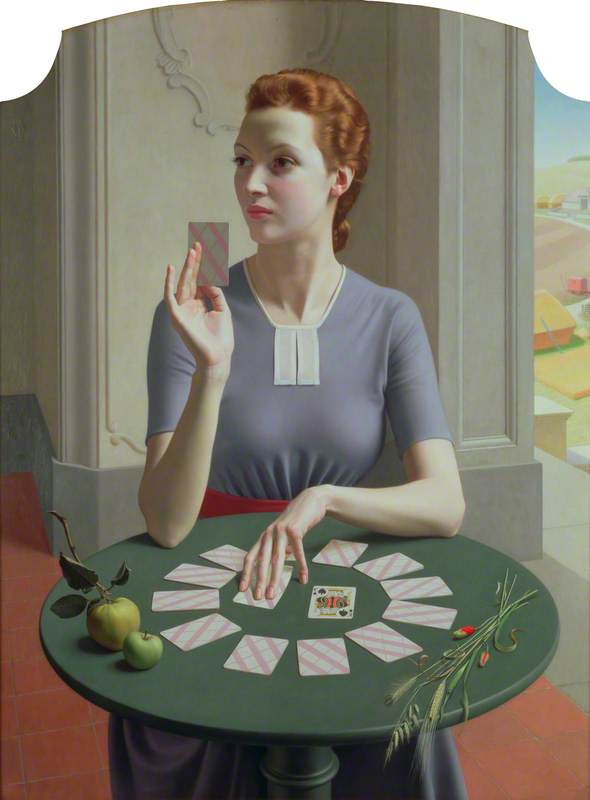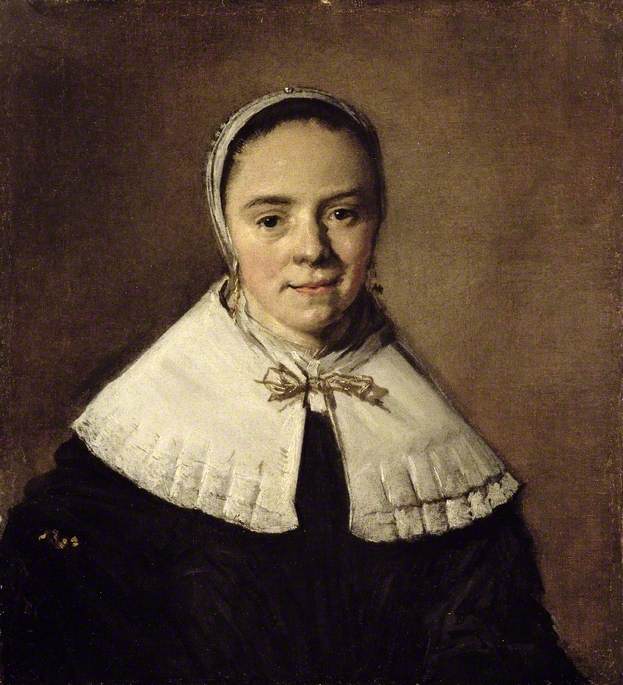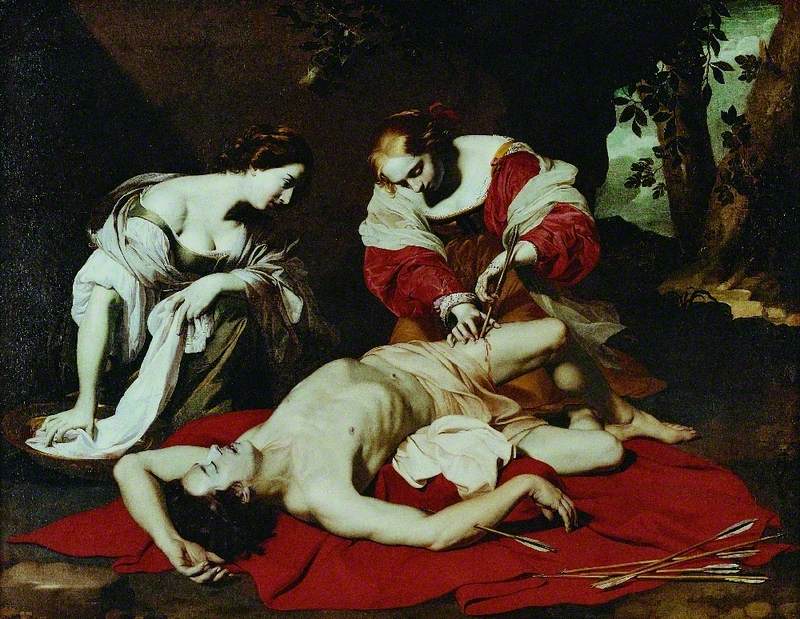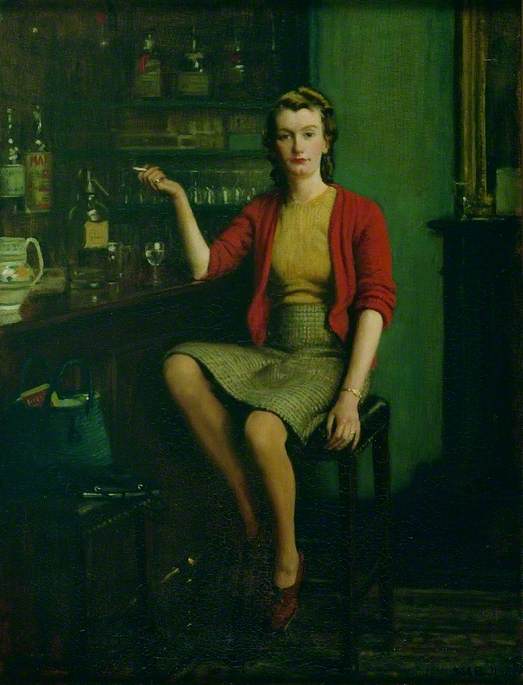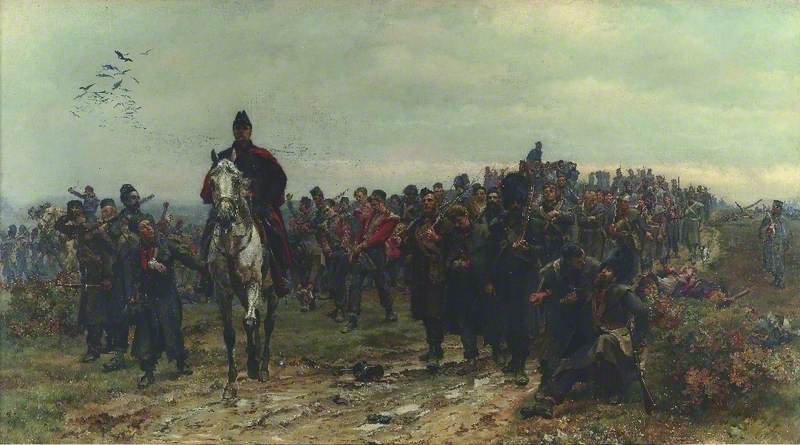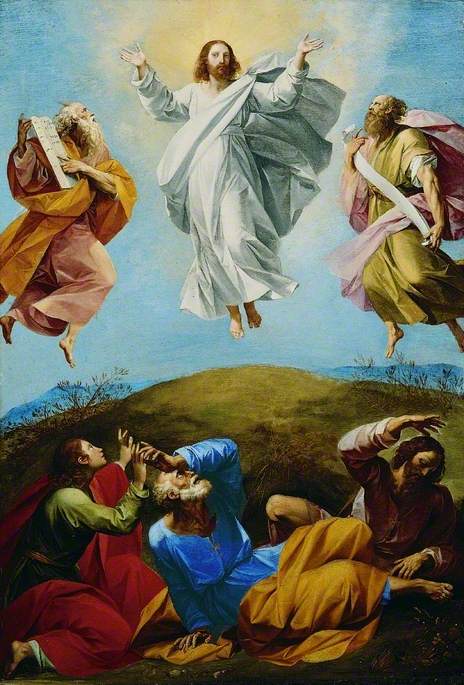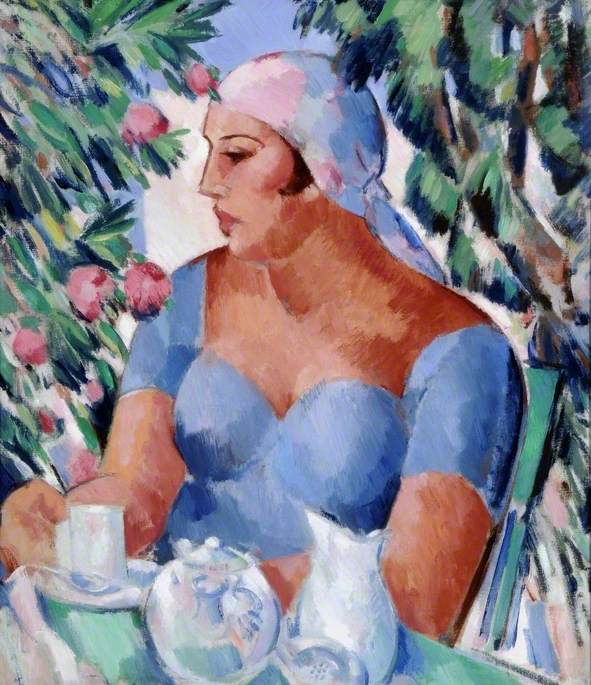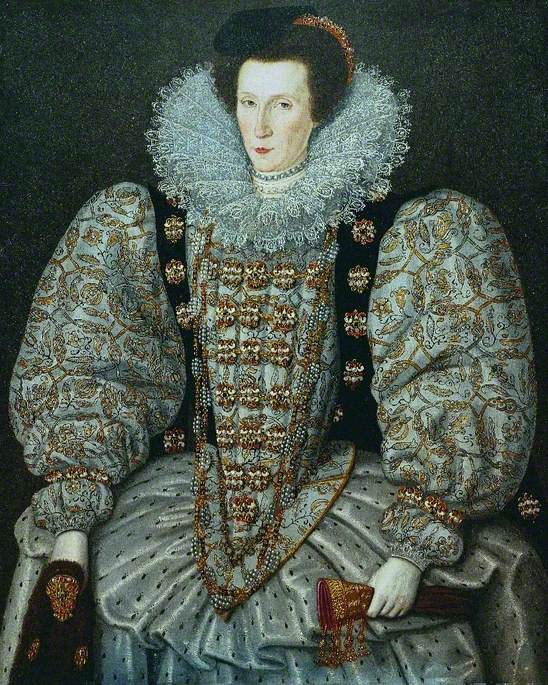Ferens is inviting visitors to help create an online exhibition of Hull’s favourite paintings. Visitors old and new are choosing their favourite painting in the Ferens permanent collection and telling us what it means to them. The exhibition will shape real-life exhibitions in the Gallery in 2021. Here we provide a taster of Ferens Favourites selected by volunteers in April and May 2020. International artists Sabine Jeanne Bieli and Ian McKeever also shared their favourite Ferens paintings. A big thank you to all for their inspired and moving commentaries.
To find out more and participate in Ferens Favourites, visit www.ferensfavourites.co.uk
-
Curled Nude on a Stool
Curled Nude on a Stool 1982–1983Sabine Jeanne Bieli, artist, Hull
I find a tender human-ness in this picture. The bowed figure radiates something comforting, round and warm. And yet: naked and bent forward in an uncomfortable position, she looks vulnerable.
There is concentration and peace in this painting and in the clarity of its composition. At the same time, something stirs and unsettles emotions below a seemingly calm surface.
Euan Uglow (1932–2000)
Oil on canvas
H 77.7 x W 100 cm
Ferens Art Gallery
-
Greenhouse and Garden
Greenhouse and Garden 1937Ian McKeever, artist, (born and grew up in Withernsea)
Just occasionally one sees a painting which for what ever reason sticks in the mind, becomes a part of one’s living consciousness, so to speak. Such a work for me is Stanley Spencer’s modest painting of a bunch of onions hanging on a greenhouse wall, Greenhouse and Garden, which I first saw as a boy at the Ferens in the 1950’s. Of all the things one could paint, the grand themes of life, why paint a bunch of humble onions? This question mystified me.
Stanley Spencer (1891–1959)
Oil on canvas
H 76.2 x W 50.8 cm
Ferens Art Gallery
-
The Lion at Home
The Lion at Home 1881Justine Hunt, Hull
As a young child in the 1950 s my mother brought me to the Ferens to see this picture. I was frightened by the size of the lions and the way they were looking at me! In those days we didn’t have a TV and I had not seen film of real lions- so it made a huge impact on me!
Now, as a volunteer at Ferens, I like to talk to visitors about the picture. It is a popular painting for young people still. I have such an emotional connection to it - I was amazed to see it there when I started volunteering. Funny how we remember things which evoke strong feelings!
Rosa Bonheur (1822–1899)
Oil on canvas
H 162.3 x W 262.3 cm
Ferens Art Gallery
-
The Lion at Home
Val Maybury, Hull
This painting holds deep family associations. This reassuring painting captures a child’s eye view of the bond between members of a loving family. The parents are protective, watchful: the young are encircled and relaxed. It is idealised reality but the depiction of their physical beauty is breath-taking. My boys loved hearing too how Rosa had lions in her studio.
I gave the postcard to my son when he was 6 and upset. I sent other copies when he was struggling at university and when my lovely father died. The painting belongs to us and always will.
My mother who is now 86 loves this painting too. She had a jigsaw of it when her father was away in a prisoner of war camp.
-
The Lion at Home
Gaile Scaife, Hull
I just think it is a stunning painting but more because I love wildlife and the Lion is one of my favourite wild animals. My friend and I were booked on a Safari dream of a lifetime holiday in Kenya at the end of June but sadly we won’t be going. It was to be an early joint 70th birthday present to ourselves. We will just have to enjoy live footage on line, saving lives and staying safe are more important than a once in a life time holiday.
-
Jupiter and Ganymede
Jupiter and GanymedeOlwen Evans-Knibb, Hull
I didn't look at this painting properly for a long while, and I assumed it was plaster in relief. It gradually crept more clearly into my range of vision and I realised that it is an incredibly skillful and extremely beautiful painting. I have rarely seen such a perfect optical illusion, and I find it almost uncanny. It lurks there high on the wall, quite unassuming, but once you look at it and actually see it, it's completely mind-blowing. How does a person develop such talent and vision? It always leaves me with a strong sense of peace and beauty.
Jacob de Wit (1695–1754)
Oil on canvas
H 23.5 x W 20 cm
Ferens Art Gallery
-
The Golden Wedding
The Golden Wedding c.1900Ann Jepson, Tickton
It is our golden wedding in July this year and we had loads of special celebrations planned, holidays with family, parties with various groups and a return to our honeymoon village in Austria.
None of that is now happening but we are just glad that we are all safe and well and happy and……. the weather is being so kind to us – imagine this in the winter.
So we feel like the couple in the painting, still content.
Pompeo Massani (1850–1920)
Oil on canvas
H 18.5 x W 22.3 cm
Ferens Art Gallery
-
The Golden Wedding
Graham Ibson, Hull
My favourite is 'The Golden Wedding' by Pompeo Massani. The reason is I was one of the volunteers who put the exhibition 'Silent Conversation' together in 2018. It was one I chose because that year was my own Golden Wedding. Every time I see it it just makes me smile.
-
Boulogne Sands (Children Shrimping)
Boulogne Sands (Children Shrimping) 1891Julie Corbett, Hull
I chose this painting because it was and still is the only painting I have tried to copy. A few years ago, possibly 8 or 9 I took part in some free art classes. The artist leading was called Bridget and we were introduced to several things, such as perspective and blending and all the classes took place in Ferens or the Maritime museum. It felt quite transgressive to take water and paint into the shinny, clean Ferens. This painting reminded me so much of holidays and days out at Mappleton and St Bees where I was shown how to use and then showed my children how to use nets to catch shrimp and juvenile flatfish. Trying to copy it made me look at it in a different way.
Philip Wilson Steer (1860–1942)
Oil on canvas
H 47.6 x W 57.1 cm
Ferens Art Gallery
-
A Game of Patience
A Game of Patience 1937Cynthia Ward, South Holderness
Initially, it's appeal to me is in the sense of utter silence, conveyed by the sitter's still pose and far away gaze and also by the cool, almost monochromatic colour scheme.
But then I'm drawn to the obvious symbolism of the items on the table.
A game of Patience? A card reading?
Apples, wild oats, buds.
I love the mystery.
Chosen because it is an unusual pose, exquisitely painted but also because there's a mystery to solve. I'm interested in Symbolism.
Meredith Frampton (1894–1984)
Oil on canvas
H 106.7 x W 78.7 cm
Ferens Art Gallery
-
A Game of Patience
Claire Bell, Hull
Whenever I visit the Ferens Art Gallery I'm always drawn to this painting it seems by some sort of hypnosis. It is mysterious and uber realistic simultaneously. The woman appears so still and poised; I feel calm observing her. My favourite part of the painting are her hands, particularly the fingers. The skin is so very life-like; I'm mesmerised.
I love the way she holds the card, as though pausing to listen or ponder on something other than her card game. I wonder about the symbolism within the painting. It is Autumn/harvest time; why is this significant? The cool marble walls and hard terracotta tiles in the background contrast with the activity in the fields beyond.
This painting entrances me every time.
-
The Lame Duck
The Lame Duck c.1917Andrew Carrick, Hull
The first thing that caught my attention is the quality of the painting of the sea, the colours, wave shapes, everything about it is of the highest quality. Stand and stare at it and you feel you are at sea, and the floor beneath you starts to move. Add to that the theme, of survival, endurance; you've taken a battering but you've come through. This chimes in with the current times, I think.
Thomas Jacques Somerscales (1842–1927)
Oil on canvas
H 122.5 x W 184 cm
Ferens Art Gallery
-
Portrait of a Young Woman
Portrait of a Young Woman c.1660Anne Benson, Hedon
The reason I am choosing this painting is because I love art of the Netherlands during this period.
I felt really inspired by paintings in the Mauritshuis, The Hague and reading Tulip Fever by Deborah Moggach. The women always covered their hair with a starch cap and a highly starched collar. The maid servants found the laundry to be really hard work, washing by hand and having to bleach the whites in the Sun, dry them and use a flat iron. A long and laborious process.
Dave Rowe, Cottingham
This painting always stops me I my tracks when I’m walking past it usually in its normal place in Gallery two. I love how he has caught the innocence of a young girl and her eyes are amazing.
Frans Hals (c.1581–1585–1666)
Oil on canvas
H 60 x W 55.5 cm
Ferens Art Gallery
-
Interior with a Boiler
Interior with a Boiler 1973Molly, Bradford
The simplicity and muted tones of this painting caught my interest - I'd never seen it before. Through the lens of art it compels the viewer to consider the practical application of science - and offers beauty in a boiler! This exercise showed me Gray's work for the first time - perhaps not the intended result, but a useful one for me.
John McAllister Gray (b.1942)
Oil on canvas
H 208 x W 248 cm
Ferens Art Gallery
-
Girl in Grey
Girl in Grey 1939Una, Lismore
I love the sense of reverie and contemplative essence of the scene, a girl suddenly lost in her own thoughts, book forgotten. The ability of the artist to confidently paint a background in large blocks of contrasting colour, while the subject matter is beautifully executed in a delicate detailed sensitive manner. The balance between light and dark, the use of space, the pared-back palette, the detail of the dress, there are many reasons to love this painting.
Louis le Brocquy (1916–2012)
Oil on canvas
H 91 x W 91 cm
Ferens Art Gallery
-
Electra at the Tomb of Agamemnon
Electra at the Tomb of Agamemnon c.1869Ailsa Oliver, Skirlaugh
A painting at which I always stop and gaze. There is something about her face, the way she stands, the despair and grief that is so apparent. I can't help but wonder at the skill with which raw emotion is depicted in such an understated way. I also admire the way the artist has painted the drape of her robe so beautifully - I can almost sense how it would feel to the touch.
Frederic Leighton (1830–1896)
Oil on canvas
H 150 x W 75.5 cm
Ferens Art Gallery
-
Saint Sebastian Tended by the Holy Irene
Saint Sebastian Tended by the Holy Irene 1650sSandra Cooper, Hull
I chose this painting because it has been my favourite since I was 12 years old - a total of over 50 years. I went to secondary school near the city centre and whenever time allowed, lunchtimes or after school, my friends and I would visit the Ferens Art Gallery to take a look around - we were all keen art students. I was always drawn to this painting. It has the ability to shock, but it’s difficult to look away. The translucent skin is fascinating. Each time you look at it you are drawn into the story, it’s wonderful.
Nicolas Régnier (c.1590–1667)
Oil on canvas
H 171.5 x W 219.4 cm
Ferens Art Gallery
-
In a Bar
In a Bar 1943Robbie, Saltaire
In a bar caught my eye as I scrolled through the collection.
I thought she could be me or I could be talking to her, comfortable looking old fashioned bar.
Frederick William Elwell (1870–1958)
Oil on canvas
H 82 x W 62.5 cm
Ferens Art Gallery
-
The Return from Inkerman
The Return from Inkerman 1877Jenny Harrison, Hull
My favourite picture has always been The Return from Inkerman by Elizabeth Thompson. The depth of field and the weary soldiers helping each other home are excellently portrayed. I can find something new every time I see it.
Elizabeth Southerden Thompson Butler (1846–1933)
Oil on canvas
H 86.7 x W 104.5 cm
Ferens Art Gallery
-
The Return from Inkerman
Paul Benson, Hedon
Whilst the artist did the most amazingly detail paintings depicting the glory and heroism of war, she also showed what is was like to be the common soldier. The hardships suffered by the military man are plain to see whether in victory or defeat.
When looking at this painting you can see the realism, the detailed painting enable you to be there and experience the sadness and dejection seen in the soldiers faces. Researching her a while ago, I was intrigued by the great care she took to make sure details in her painting were correct. Soldiers who had taken part in the battle would pose for her wearing the actual uniforms and carrying the weapons that they had used.
-
The Exhibition
The Exhibition 1983Fionn (12), Lismore
I chose this painting because I really liked the almost 3D art style. The colours were really vibrant so it stood out from the rest. I also liked the detail put into each individual miniature painting and how each of them had a slightly different art style.
Kenneth Fowler (b.1955)
Oil on hardboard
H 89.6 x W 101.6 cm
Ferens Art Gallery
1983, oil on hardboard by Kenneth Fowler (b.1955)
-
The Transfiguration
The Transfiguration c.1620Paul Soulsby, Hull
The subject matter is taken from the New Testament and depicts Christ’s transfiguration on Mount Tabor. The New Testament prophecy foretells Christ’s return to earth in the Second Coming.
Although classed as one of the last exponents of a then old fashioned highly stylised ‘Roman Mannerism’ approach within the epoch of change in Renaissance painting this is countered by the respect his former students, Caravaggio and Andrea Sacchi expressed for their former teacher.
Giuseppe Cesari (1568–1640)
Oil on panel
H 88.3 x W 58.9 cm
Ferens Art Gallery
-
January
January 1960Moritz, Lismore
Composition, proportions, layout, horizontal division of landscape and sky. Interrupted with vertical vegetation giving the feeling of new or change.
Pleasing low use of colour, encouraging imagination.
Capturing the cold wet yet hopeful and new year.
This painting leaves an impression and is inspiring.
Denis Booth (1916–2001)
Oil on canvas
H 90.5 x W 90.5 cm
Ferens Art Gallery
-
Beau Site (Margaret Morris, 1891–1980, the Dancer)
Beau Site (Margaret Morris, 1891–1980, the Dancer) 1923Sue Pizzey, Hull
Painted in 1923 and shows the dancer Margaret Morris who was also the painter’s wife. This was painted at Cape d'Antibes and shows the strong French sunlight, so different from the sunlight in Britain. This is colourful, shows Margaret in a solitary but thoughtful pose.
I do so hope this painting will be chosen because it is do bright and lifts the mood of the viewer.
John Duncan Fergusson (1874–1961)
Oil on canvas
H 76.5 x W 66 cm
Ferens Art Gallery
-
Sensitive Skin
Sensitive Skin 1986Helen E, Hull
I really like the detail within this artwork but like the fact that the face painted really stands out too.
Graham Crowley (b.1950)
Oil on canvas
H 202 x W 161 cm
Ferens Art Gallery
-
Vincent Galloway (1894–1977)
Vincent Galloway (1894–1977) 1970Jack (15), Lismore
My favourite of the paintings at Ferens art gallery is 'Vincent Galloway' by George Kenneth Beaulah for its pleasing stylised look and soft brushstrokes as well as the use of a brilliant red and yellow to contrast the blue background.
George Kenneth Beaulah (1910–1994)
Oil on board
H 30.4 x W 25.6 cm
Ferens Art Gallery
-
A Noblewoman
A Noblewoman 1590sDon Knibb, Hull
I really like the vibrancy and clarity of the colours in her dress, and the artistry and detail in the painting, particularly her ruff. Her expression suggests she's not someone to cross swords with!
The painting also points up huge contrasts between her society and ours, and always makes me wonder what sort of life she led. How many servants did it take to keep her looking like that? And on a more mundane level, how long did it take her to get dressed and undressed? She presumably considered it time well spent!
William Segar (c.1554–1633) (attributed to)
Oil on canvas
H 103.5 x W 82.6 cm
Ferens Art Gallery
Explore artists in this Curation
View all 22-
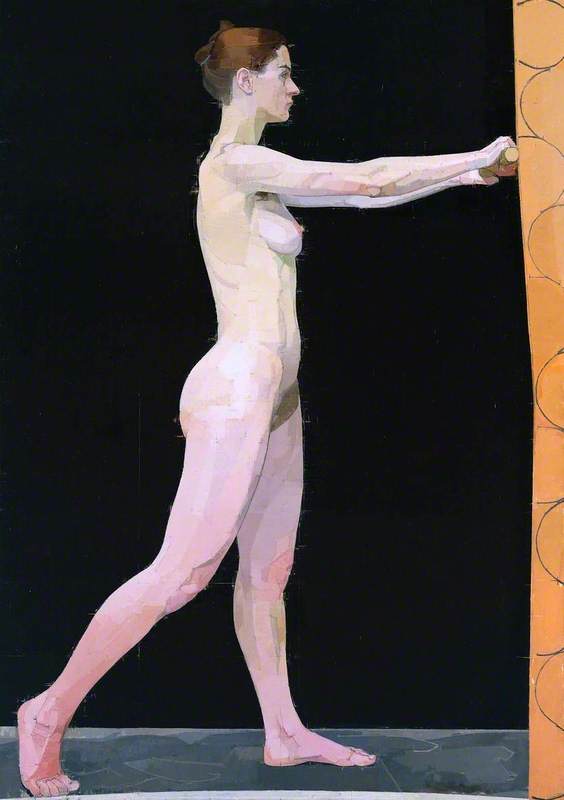 Euan Uglow (1932–2000)
Euan Uglow (1932–2000) -
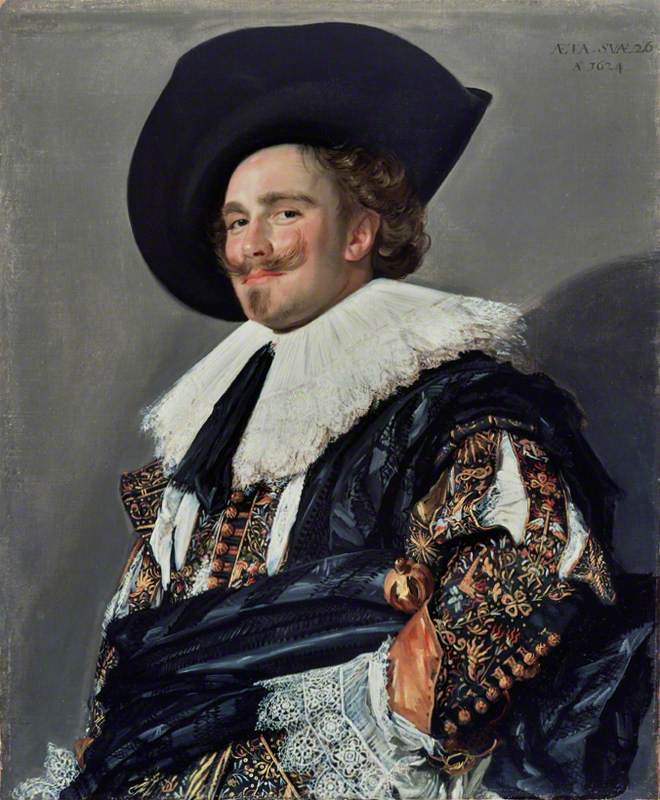 Frans Hals (c.1581–1585–1666)
Frans Hals (c.1581–1585–1666) -
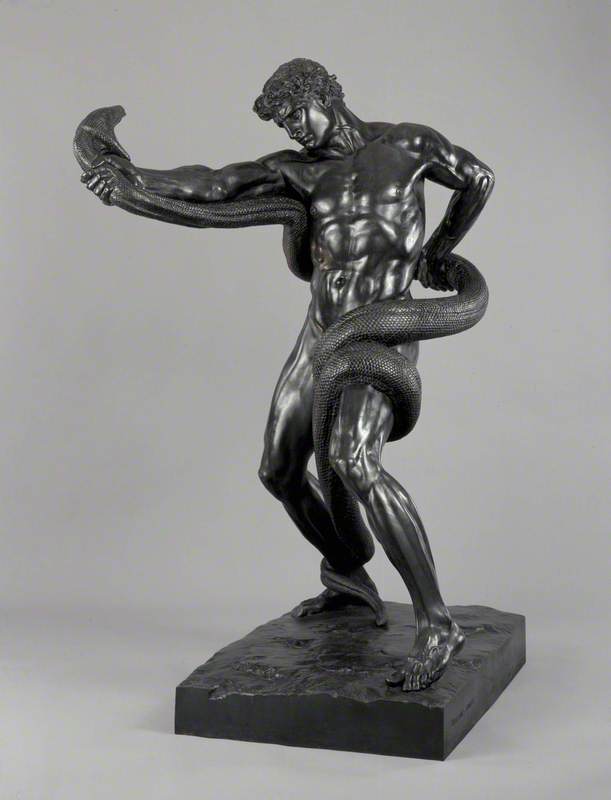 Frederic Leighton (1830–1896)
Frederic Leighton (1830–1896) -
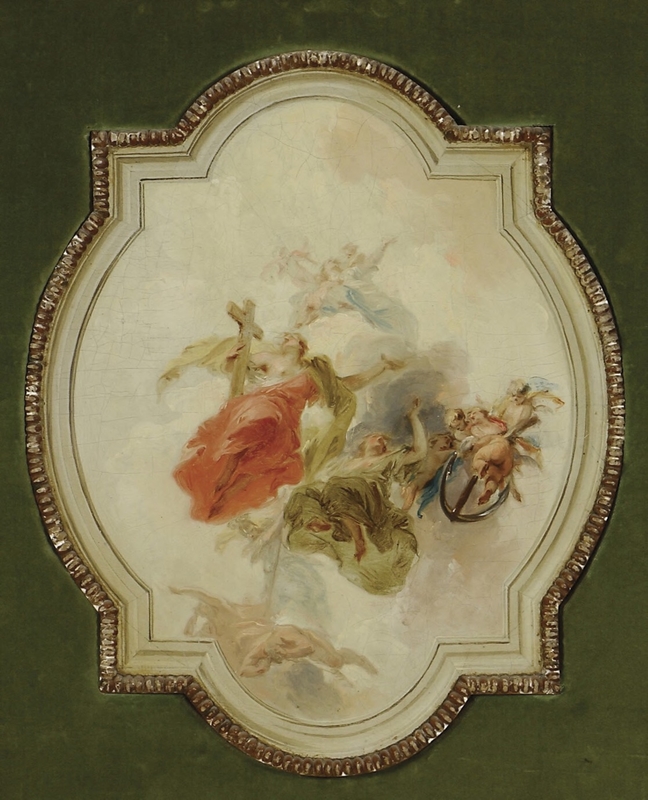 Jacob de Wit (1695–1754)
Jacob de Wit (1695–1754) -
 John Duncan Fergusson (1874–1961)
John Duncan Fergusson (1874–1961) -
 Pompeo Massani (1850–1920)
Pompeo Massani (1850–1920) -
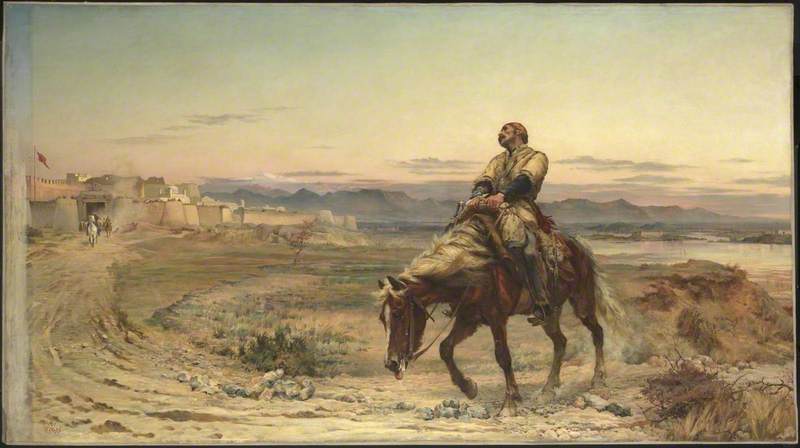 Elizabeth Southerden Thompson Butler (1846–1933)
Elizabeth Southerden Thompson Butler (1846–1933) -
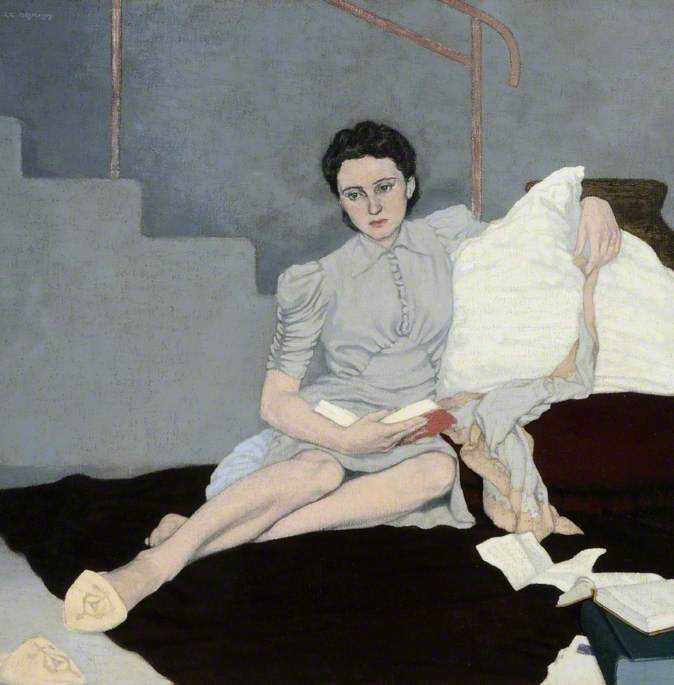 Louis le Brocquy (1916–2012)
Louis le Brocquy (1916–2012) -
 Rosa Bonheur (1822–1899)
Rosa Bonheur (1822–1899) -
 John McAllister Gray (b.1942)
John McAllister Gray (b.1942) - View all 22
